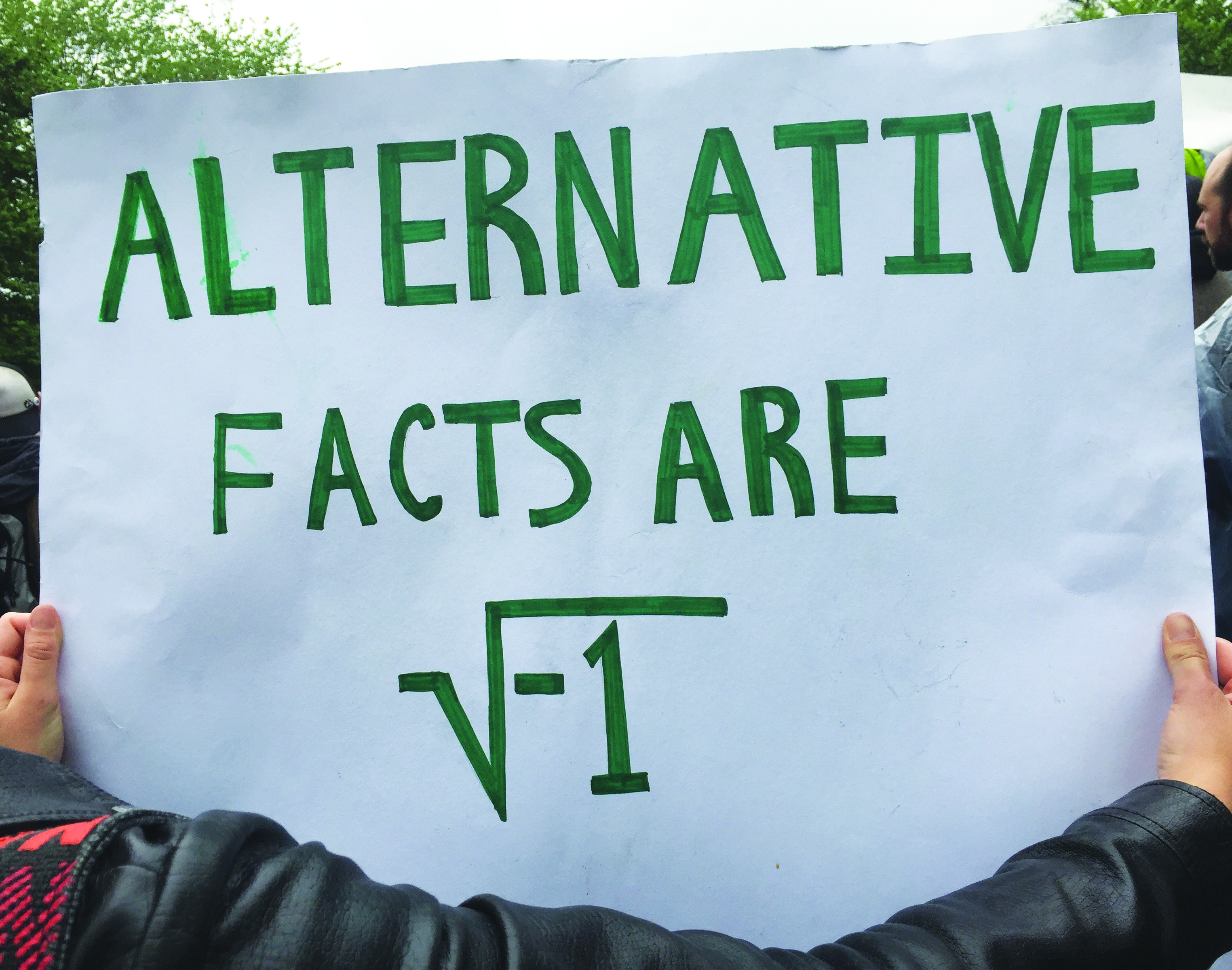Marching for Science
On April 22, science went public in a major way. For the first time, thousands of scientists gathered in Washington, D.C., and transformed Earth Day into a tribute to science.
The concept of a March for Science originated in social media discussions, similarly to the Women’s March on Washington in January. Support grew rapidly. The American Association for the Advancement of Science (AAAS) partnered with the march, which evolved into a mass movement within the scientific community in the U.S. and around the world. Numerous professional organizations, including SIAM, endorsed the goals of the march: to call for science that upholds the common good and for political leaders and policy makers to enact evidence-based policies in the public interest. What started locally grew into a global phenomenon, with events held in more than 600 cities on six continents. The following are some of our impressions of the events that took place in Washington, D.C.

At an early morning pre-rally at AAAS headquarters, AAAS CEO Rush Holt—former Democratic congressman from N.J. who holds a Ph.D. in physics—introduced representatives of professional societies involved in the march’s organization, such as the American Geophysical Union, Oceanographic Society, American Physical Society, and Optical Society, among others. He also acknowledged numerous noteworthy attendees, including William Phillips (National Institute of Standards and Technology, 1997 Nobel Laureate in Physics), Shirley Malcolm (director of Education and Human Resources, AAAS), and Congressman Bill Foster (D-IL, the only Ph.D. scientist remaining in the U.S. Congress).
The rally itself kicked off at 10 a.m. at the Washington Monument on the National Mall. The four-hour program featured an impressive lineup of prominent speakers representing a broad range of ages, backgrounds, and expertise, including Denis Hayes (co-founder of the first Earth Day in 1970), Bill Nye the Science Guy, and YouTube star Tyler DeWitt. The program concluded with a Twitter message from none other than Pope Francis.
The collective events offered several powerful take-home messages, some of which we outline here. Science is at a critical juncture. The scientific method is under attack, and individuals and interests with the power to do real harm are threatening the very idea of evidence, logic, and reason. We, as members of the scientific community, must go public and explain our work to general audiences. It behooves us to make people aware of our research and its benefits to society. Scientists should talk to people, instead of at them. We should not complain about slashed funding if we cannot tell taxpayers why science matters.
Following the rally, the crowd marched down Constitution Avenue, from the Washington Monument to the foot of Capitol Hill. While a rally is more or less a static affair, participants of the march demonstrated solidarity — vocally by chanting in unison or in waves along the parade route, and visually by showing off their signs. Here are some of our favorites:
- Science, not silence
- Oceans are rising, and so are we
- There is no Planet B
- In peer review we trust
- Make America think again
- Alternative facts are not statistically significant
- Science cures alternative facts
- Empirical data trump imperial alt-facts
- No beer without science
Favorable weather forecasts earlier in the week took a turn for the worse, and march day turned out to be soggy and wet. Still, most people endured and kept their spirits high. Although we were all soaked at the end of the day, it felt good to have been part of this unprecedented event.
About the Authors
Hans Kaper
Affiliate Faculty, Georgetown University
Hans Kaper, founding chair of the SIAM Activity Group on Mathematics of Planet Earth and editor-in-chief of SIAM News, is affiliate faculty in the Department of Mathematics and Statistics at Georgetown University.
Hans Engler
Professor, Georgetown University
Hans Engler is a professor of mathematics at Georgetown University. He previously chaired the SIAM Activity Group on Mathematics of Planet Earth.
Stay Up-to-Date with Email Alerts
Sign up for our monthly newsletter and emails about other topics of your choosing.



